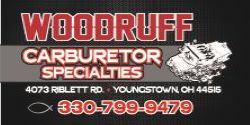Tyron68 sent me a PM about his problem. I'll repeat my answer here based on my 60 years working on hot rods. Your experience may be different...
I don't know where to begin but I'll give it a shot.
1) What is the exact temperature the engine runs at as measured with a mechanical gauge?
2) Realize that a cooling system with 50/50 coolant /water and a 16lb. pressure cap won't "overheat", as in puke its fluid, until close to 260*.
3) Are you using a factory water pump for A/C and a factory water pump housing?
4) Are you using factory drive pulleys?
5) Is the Vintage Air condenser installed the recommended distance from the face of the radiator?
6) Is the mechanical fan installed so that it is 1/3 to 1/2 inside the new shroud?
7) If you have an A/T do you have an accessory transmission cooler?
8) If the engine actually "overheats" have you put in a new 180* Super Stant thermostat?
9) What is your setting of initial and total timing? Too far retarded or too far advanced will affect operating temperature.
10) What do the sparkplugs look like? Do they look like they're running lean, as in almost white porcelain around the electrode?
There are so many things that can affect how hot an engine runs. I recommend buying a cheap IR temperature gun from Harbor Freight and using it to pinpoint the temperature of the coolant returning to the top of the radiator after the thermostat opens. Then check the bottom hose temperature as the coolant is returning to the engine. You can also use it to see if there are any "hot spots" in the radiator where it may be internally clogged, by scanning the face of it. For reference I look for +-50* difference.
I currently have a 26" Griffin aluminum radiator (2 rows of 1 1/2" tubes) and an inexpensive Dual 12" Summit fan/shroud set-up that works great. I also have a FlowKooler water pump in an aluminum water pump housing. I've had many different set-ups in my car over the years that worked fine, and a few that didn't. Attention to every detail, as outlined above should save you lots of money from "throwing parts" at the problem. Then again, my car runs at 195*-200* in our 100*-108*summer temperatures. It never "overheats" or spews coolant when left idling for extended time periods. I used to think that cars should run at 160* to 180*, and that may work with a stock engine, but as the horsepower goes up, so does the heat. I'm very happy with my set-up.
















